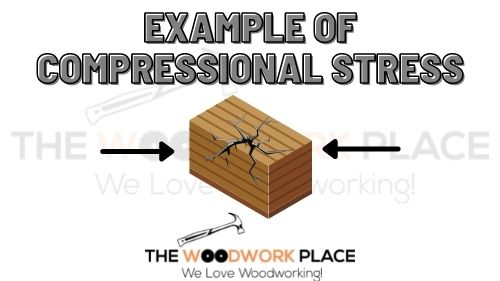No garage, gaming room, or bedroom is complete without plenty of shelving. Plus, it’s one of the most simple home DIY projects you can do.
However, when shelving goes wrong, it usually isn’t the result of a poorly hammered nail or two. Instead, the fault usually lies in shelving material.
Yep, the type of wood you use for a shelf is fairly important. Especially when your choice of shelf material depends on factors such as wood strength, potential sagging, and even possible room humidity.
But, let’s say you’ve narrowed your shelving options down to just two materials; OSB vs Plywood. Which one of these materials would be better for your home?

This post may contain affiliate links to products that we receive a commission for (at no additional cost to you). Learn more here.
1). OSB Vs Plywood Strength: Which One’s Stronger?
So, First Things First… Which Is Stronger, OSB or Plywood?
When it comes to strength, there are three main ways that we measure it in wood; Shear Strength, Tensile Strength, and Compressional (or Bending) Strength.
Shear Strength: To put it in as simple terms as possible, this measures how well a wood beam can hold up before it slips due to shear stress.

Tensile Strength: This measures how well wood can handle being pulled apart, before it starts fracturing and splitting due to tensional stress.

Compressional (Bending) Strength: Now, compressional strength is what really matters when it comes to shelving. Compressional strength measures how well wood can hold up before collapsing in on itself due to compressional stress.

Now, OSB beats out Plywood when it comes to shear strength – in fact OSB has twice the shear strength of Plywood. Which is why OSB is popularly used as roof sheathing material.
However, when it comes to compressive strength – which is what matters most for your shelf – plywood is the clear winner.
Plywood can handle up to 3,000-5,000 pounds of pressure per square inch. Compared to OSB’s 1,500-2,500 pounds of pressure per square inch limit, plywood is clearly the better option based on strength alone.
What Is OSB Used For? OSB is a widely building material, used to make everything from subflooring to roof sheathing and wall panels.
2). OSB Vs Plywood Sagging: Which One Is Less Likely To Sag?
Great! So Plywood Is Stronger. But, Does Plywood Make For Good Shelves?
Very much so. Plywood is widely used to make shelving, cabinets, kitchen countertops and the like. While OSB is more of a constructional material first and foremost, used in structural work such as load-bearing walls panels.
Plywood is also much better at handling humidity and moisture than OSB too. Which is an important factor if you plan on building a shelf for say your kitchen or garage.
But, what really sets plywood apart from OSB is it’s rigidity. It’s ability to resist sagging and keep its structure under say a stack of hefty books, is superb.
Which is one of the main reasons why OSB is typically a better choice material for your attic floor. You can learn more about it here in our post: Why You Should Use OSB (Not Plywood) For Your Attic Floor
So, Will That Plywood Shelving Never Sag?
It depends on the length of that shelf (and a few other things).
Thankfully, you can easily figure out if your plywood is likely to sag by using a simple calculator.
The Sagulator (by Woodbin) is a really neat free online calculator that lets you quickly work out just how much of a load your plywood can expect to take.
You will need to know the following first;
- The type of wood your plywood is made from.
- The thickness of that plywood.
- How much load you plan on putting no the shelf.
- The estimated shelf span.
- And whether that shelf will be a fixed or a floating shelf.
Once you have those details to hand, hop on over to The Sagulator to see if your plywood board will hold up.
You can check out and use The Sagulator Calculator for free by clicking here.
And What Kind Of Plywood Should You Use For Storage Shelves?
The type of material the plywood is made from matters less than the actual thickness of the ply itself.
For shelving, you will want your plywood board to be 3/4 inches thick. Anything less than that, such as 1/2 inch thick plywood, is going to need extra support to keep it upright.
What Is Plywood Used For? Plywood is used to make cabinets, countertops, construction and crates. It is very much an all-purpose versatile engineered wood.
3). OSB Vs Plywood Price: Which One Is More Affordable?
Is OSB Much Cheaper Than Plywood?
Generally, OSB is more cost-effective than plywood, but not by a lot.
Unless you plan on using a lot of OSB, (on a big construction project), you won’t see much of a difference in terms of OSB’s impact on your wallet.
Plus, those small savings don’t manage to outweigh the fact that plywood is a better investment long term for your home.
Related Post: Can You Safely Burn OSB In A Wood Stove?
So To Sum Up…
Unless you really need to save money, then you are much better off constructing shelves from plywood.
Plywood is stronger, more durable, and just better to look at aesthetically than OSB board.
Which also makes it a better choice for shelving that other manufactured wood types, such as MDF. In fact, we go into a little more detail comparing MDF and Plywood for shelving in our post here: A Quick Guide To Choosing Between Plywood Or MDF For Shelves
References
https://bct.eco.umass.edu/publications/articles/choosing-between-oriented-strandboard-and-plywood/
Strength Properties of Wood for Practical Applications | Oklahoma State University (okstate.edu)



